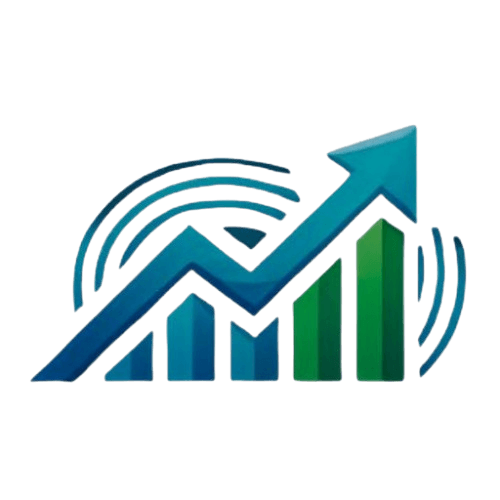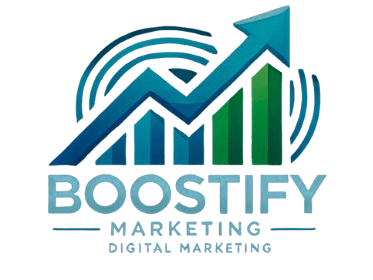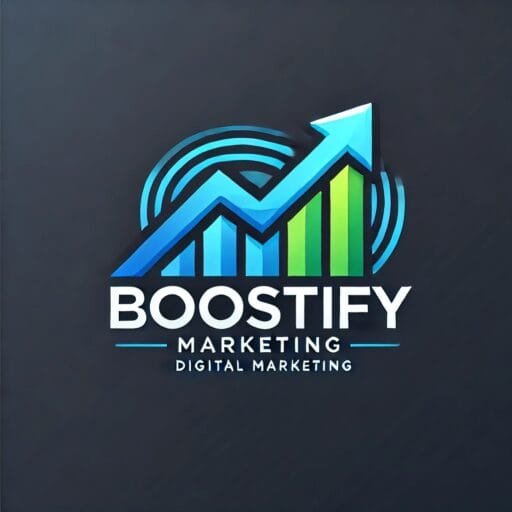
The Ultimate SEO Checklist for 2025
🧩 How SEO Drives Results in Digital Marketing (And How to Start Today)
Struggling to get noticed online despite posting, advertising, or redesigning your site? You’re not alone — over 90% of web pages get zero traffic from Google.
The solution? SEO — the backbone of long-term, organic growth in digital marketing.
In this guide, you’ll learn:
What SEO really means in 2025
The business benefits of organic traffic
Key SEO types and tools you should know
How to start improving your visibility today
Let’s break it down.
In today’s rapidly evolving digital landscape, businesses must recognize the importance of search engine optimization (SEO). More consumers are using the internet to find products, services, and information. Because of this, a strong online presence is now essential for success.
SEO is a strategy that improves a website’s content, structure, and technical features. This helps the site appear better on search engine results pages (SERPs). By effectively implementing SEO techniques, businesses can significantly improve their chances of attracting potential customers.
One of the primary benefits of SEO is its ability to drive organic traffic to a website. SEO is different from paid advertising. Paid ads can be expensive and often give short-term results. SEO aims to attract visitors through free search results.
This helps businesses save money over time. It also builds trust with users.
People often see organic listings as more reliable than paid ads. When a website ranks higher in search results, it is more likely to get clicks. This leads to more traffic and, in the end, higher conversion rates.
As competition in the online marketplace grows, understanding SEO is crucial for businesses of all sizes. Companies that neglect SEO may find themselves overshadowed by competitors who are more adept at optimizing their online presence.
This can lead to lost chances. Potential customers might not find a business that ranks low in search results. Therefore, investing time and resources into learning and implementing effective SEO strategies is vital for staying competitive.
Moreover, SEO is not a one-time effort but an ongoing process that requires continuous monitoring and adaptation. Search engine algorithms are constantly evolving, and what works today may not be effective tomorrow.
Businesses need to keep up with the latest trends and best practices in SEO. This helps them maintain their rankings and adjust to changes in user behavior and search engine technology. This includes optimizing for mobile devices, improving site speed, and ensuring that content is relevant and engaging.
In addition to technical optimization, SEO also encompasses content marketing, which plays a significant role in attracting and retaining visitors. Good, informative, and engaging content helps improve search rankings.
It also encourages users to stay longer on a website. This reduces bounce rates and increases the chances of conversions.
Businesses can create helpful content for their audience. This can help them become leaders in their industry. It also helps build loyal customers.
In conclusion, in today’s digital world, search engine optimization is a vital tool for businesses. It helps them improve their online visibility and attract more visitors to their websites.
As competition continues to grow, understanding and implementing effective SEO strategies is essential for success. By investing in SEO, businesses can improve their search rankings. This also helps build trust and credibility with their audience. As a result, they can see increased traffic, higher conversion rates, and long-term growth.
In this article, we will look at seven important tips. These tips will help you understand SEO and use it to your benefit.
🧠 What Is SEO?
SEO (Search Engine Optimization) is the process of making your website easier for search engines like Google to understand, index, and rank.
It includes:
Using the right keywords in your content
Ensuring your site loads quickly and looks great on mobile
Building relevant backlinks to increase authority
Structuring your content to answer users’ search intent
It’s not about gaming the system — it’s about being the best answer to your audience’s questions.
SEO marketing, or Search Engine Optimization marketing, is the process of improving a website’s visibility in search engine results. This helps attract more visitors naturally, without using paid ads. The main goal of SEO marketing is to boost both the amount and quality of traffic to a website. People accomplish this through search engines like Google, Bing, and Yahoo.
SEO marketing encompasses elements such as keyword research, content creation, on-page optimisation, and link building.
In digital marketing, SEO is important. It helps bring in traffic, improves user experience, and boosts brand trust. With good SEO strategies, businesses can reach their target audience better. This helps their products and services appear easily in search results.
🚀 Why SEO Is Essential in Digital Marketing
Here’s why businesses that invest in SEO see lasting success:
✅ Cost-Effective Results
Unlike paid ads, SEO keeps working for you once set up properly. Your blog or landing page can rank for years with regular updates.
✅ High-Quality, Intent-Based Traffic
SEO targets people actively looking for your service or solution — they’re already in “buyer mode.”
✅ Builds Brand Authority
Ranking on Google shows you’re credible. Customers trust top-ranking sites more than lower or paid results.
🧱 Types of SEO You Need to Know
1. On-Page SEO
Focuses on optimizing elements on your website:
Titles, meta descriptions, and headers
Keyword-rich, helpful content
Internal linking between pages
2. Off-Page SEO
Focuses on what others say about your website:
Earning backlinks from high-authority websites
Social shares and brand mentions
Online reviews and PR
3. Technical SEO
Helps search engines crawl and index your site efficiently:
Fast loading speeds
Mobile responsiveness
XML sitemaps and clean URL structures
🛠️ Must-Have SEO Tools (Free & Paid)
Use these tools to speed up and scale your efforts:
Tool | Purpose |
|---|---|
Monitor performance & fix indexing issues | |
Track traffic sources & conversions | |
Keyword research & backlink analysis | |
Full site audit & crawl | |
On-page SEO suggestions |
🔍 Visual SEO Checklist for 2025
Here’s a quick-start visual-style checklist:
✅ Keyword in title, URL, and first 100 words
✅ Meta description includes a call to action
✅ Mobile-friendly layout
✅ Page loads in under 3 seconds
✅ Internal links to relevant content
✅ At least one high-quality external backlink
✅ Schema markup for articles, products, reviews
✅ Optimized images (compressed + alt text)
😱 Common SEO Mistakes to Avoid
Stuffing keywords instead of writing naturally
Neglecting page speed and mobile design
Publishing without promotion or backlinks
Ignoring analytics and keyword tracking
Focusing only on ranking instead of conversions
#1: Conducting Effective Keyword Research
Finding Keywords with High Potential
Keyword research is the foundation of effective SEO strategy. It means finding the keywords and phrases your target audience uses to search for information about your business.
To conduct effective keyword research, consider using tools such as Google Keyword Planner, SEMrush, or Ahrefs. Focus on finding keywords with high search volumes and low competition to boost your chances of ranking higher.
The Role of Search Intent in SEO
Understanding search intent is crucial for optimising your content. Search intent refers to the purpose behind a user’s search query. Four main types of search intent exist:
- Informational: Users are seeking information or answers to questions.
- Navigational: Users are looking for a specific website or page.
- Transactional: Users intend to make a purchase or complete a transaction.
- Commercial Investigation: Users are researching products or services before making a purchase.
By matching your content to what people are searching for, your articles will connect with your audience. This can lead to more engagement and better chances of ranking higher.
#2: On-Page SEO Techniques
Content Optimisation Strategies
On-page SEO refers to the practices you implement directly on your website to improve its search engine ranking. Content optimisation is a key aspect of on-page SEO. Here are some strategies:
- Use Target Keywords Naturally: Incorporate your primary and secondary keywords smoothly throughout your content. Avoid keyword stuffing, which can negatively impact user experience and search rankings.
- Optimise Headers and Subheaders: Use headers (H1, H2, H3) to structure your content. Include keywords in your headers to make them more relevant to search engines.
- Internal Linking: Link to other relevant pages within your website to guide users and enhance the site’s structure. This helps search engines understand your website better.
Meta Tags and Alt Text
Meta tags play an essential role in SEO.
The meta title and meta description are what users see on search engine results pages (SERPs). This makes it crucial to create them carefully. Ensure that the primary keyword is present in both the title and description.
Alt text is equally important for images. It gives a written description of images. This helps search engines index the images and improves access for users with visual impairments. Make sure to include relevant keywords in your alt text without overburdening it.
#3: The Power of High Quality Content
Engaging and Informative Content Creation
Creating top-quality content is vital for successful SEO in digital marketing. Engaging and informative content not only lures visitors but also encourages them to share your articles, increasing your reach. Here’s how to create compelling content:
- Know Your Audience: Understand your target audience’s needs, preferences, and hurdles. This will enable you to tailor your content to meet their specific needs.
Create Value: Aim to provide solutions or valuable information that addresses your audience’s questions or concerns. High-value content encourages users to spend more time on your site and return in the future. 3. Use Visuals: Incorporate relevant images, infographics, and videos to enrich your content. Visual elements enhance user engagement and can significantly boost shareability.
SEO Tips for Various Content Formats
Different content formats may require different SEO strategies. Here are a few tips for common formats:
- Blog Posts: Use engaging headlines and subheadings; incorporate lists and bullet points for easy readability.
- Videos: Optimise video titles, descriptions, and tags; consider transcribing your videos for text-based SEO benefits.
- Infographics: Include engaging visuals and concise information; embed and promote infographics on social media.
#4: Off-Page SEO and Link Building
Building Authority through Backlinks
Off-page SEO refers to strategies implemented outside your website to improve its ranking. One of the most effective off-page techniques is building backlinks. Backlinks are links from other websites to yours, and they signal to search engines that your content is trustworthy and valuable.
To build quality backlinks:
- Create Shareable Content: High-value content that resonates with users is more likely to be shared and linked to by others.
- Guest Blogging: Contribute guest articles to reputable websites in your industry. This can enhance your visibility and generate backlinks to your site.
- Join Online Communities: Take part in forums, social media groups, and Q&A sites. This will help you become an expert in your field and draw links to your site.
Social Media’s Role in SEO
Social media signals do not directly affect search rankings. However, social media platforms can bring a lot of traffic to your website.
Sharing your content on social media can help you get more visibility. This can encourage others to share it too. As a result, you may gain backlinks and improve your credibility.
#5: Technical SEO Essentials
Optimising Your Website’s Performance
Technical SEO refers to the backend optimisations of your website that improve its performance and usability. Key aspects of technical SEO include:
- Site Speed: A fast-loading website improves user experience and can positively impact search rankings. Use tools like Google PageSpeed Insights to analyse and improve your site speed.
- Mobile Optimization: More users are accessing the web on mobile devices. Make sure your website is responsive. It should provide a smooth experience on all devices.
- XML Sitemap and Robots.
txt: Create an XML sitemap to help search engines crawl and index your website. A robots.txt file can guide search engines on which pages to crawl or avoid.
Addressing Common Technical Issues
Technical issues can hinder your website’s performance and ranking potential. Regularly conduct audits to identify and rectify issues such as broken links, duplicate content, and poorly structured URLs. Tools like Screaming Frog and SEMrush can assist in conducting comprehensive site audits.
#6: Local SEO Strategies
Importance of Local Visibility
For businesses operating in specific geographical locations, local SEO is crucial. Local SEO involves optimising your online presence to attract more business from relevant local searches. Here are some local SEO strategies:
- Google My Business: Create and optimise your Google My Business listing. Ensure that your business information is accurate, up-to-date, and includes your target keywords.
- Local Keywords: Incorporate local keywords naturally into your content, titles, and meta descriptions to improve visibility for local searches.
- Reviews and Reputation Management: Encourage customers to leave reviews on platforms such as Google, Yelp, and Facebook. Positive reviews enhance your credibility and attract more customers.
Optimising for Local Searches
Improve your website to rank better in local searches. Use keywords that include your location. Create landing pages for specific locations. Add local schema markup to help search engines understand your business.
#7: Analytics and Continuous Improvement
Using Analytics to Drive SEO Decisions
Tracking and analysing your website’s performance is critical for continuous improvement. Tools like Google Analytics and Google Search Console give useful information about how users engage with your site. This information can help shape your SEO strategies.
Track important metrics like organic traffic, bounce rate, conversion rates, and keyword rankings. This helps you see how well your SEO efforts are working. Adjust your strategies based on data to optimise your performance continually.
Continuous Learning and Adaptation
Search Engine Optimization (SEO) is a dynamic and rapidly changing field that requires constant attention and adaptation. Search engines like Google often update their algorithms. These updates aim to improve user experience and provide better search results. Keeping up with these changes is important for SEO professionals and digital marketers.
To successfully manage SEO, you need to look for the latest trends and changes in the industry. You can do this by regularly reading trusted industry blogs. These blogs often share new strategies, case studies, and expert opinions.
Websites like Moz, Search Engine Journal, and Neil Patel’s blog are great places to learn about SEO. They help you stay updated on best practices and new trends.
In addition to reading blogs, participating in webinars can be incredibly beneficial. These online seminars often have industry leaders.
They share their knowledge and experiences. This provides useful tips and techniques to improve your SEO efforts. Webinars let you ask questions and talk with other professionals. This helps build a sense of community and teamwork.
Forums and online communities are helpful for making connections. You can find these on platforms like Reddit, LinkedIn, and Facebook.
These platforms allow you to discuss challenges, share insights, and learn from the experiences of others in the field. By joining these discussions, you can get different viewpoints and new ideas. These can help improve your SEO strategies.
In summary, staying ahead in the competitive digital marketing landscape requires a commitment to ongoing education and adaptation. To keep your SEO efforts effective, use industry resources.
Conclusion
The Ongoing Journey of SEO Mastery
Mastering SEO in digital marketing is a continuous journey that requires dedication, strategy, and adaptation.
By using these seven important tips, you can improve your online presence. First, do effective keyword research. Next, optimize your on-page elements. Then, create quality content.
After that, build backlinks. Also, enhance your technical SEO. Improve your local visibility. Finally, use analytics. Following these steps will help you attract more visitors to your website.
📈 Ready to Boost Your SEO?
SEO isn’t just a buzzword — it’s a powerful tool to drive real business growth. Whether you’re a small business, a startup, or an enterprise, optimizing your website for search engines can transform your digital marketing results.
✅ Want a free SEO audit?
We’ll analyze your current site, identify opportunities, and recommend actionable improvements.
Your SEO Checklist PDF is ready!
You can download it here: The Ultimate SEO Checklist for 2025









